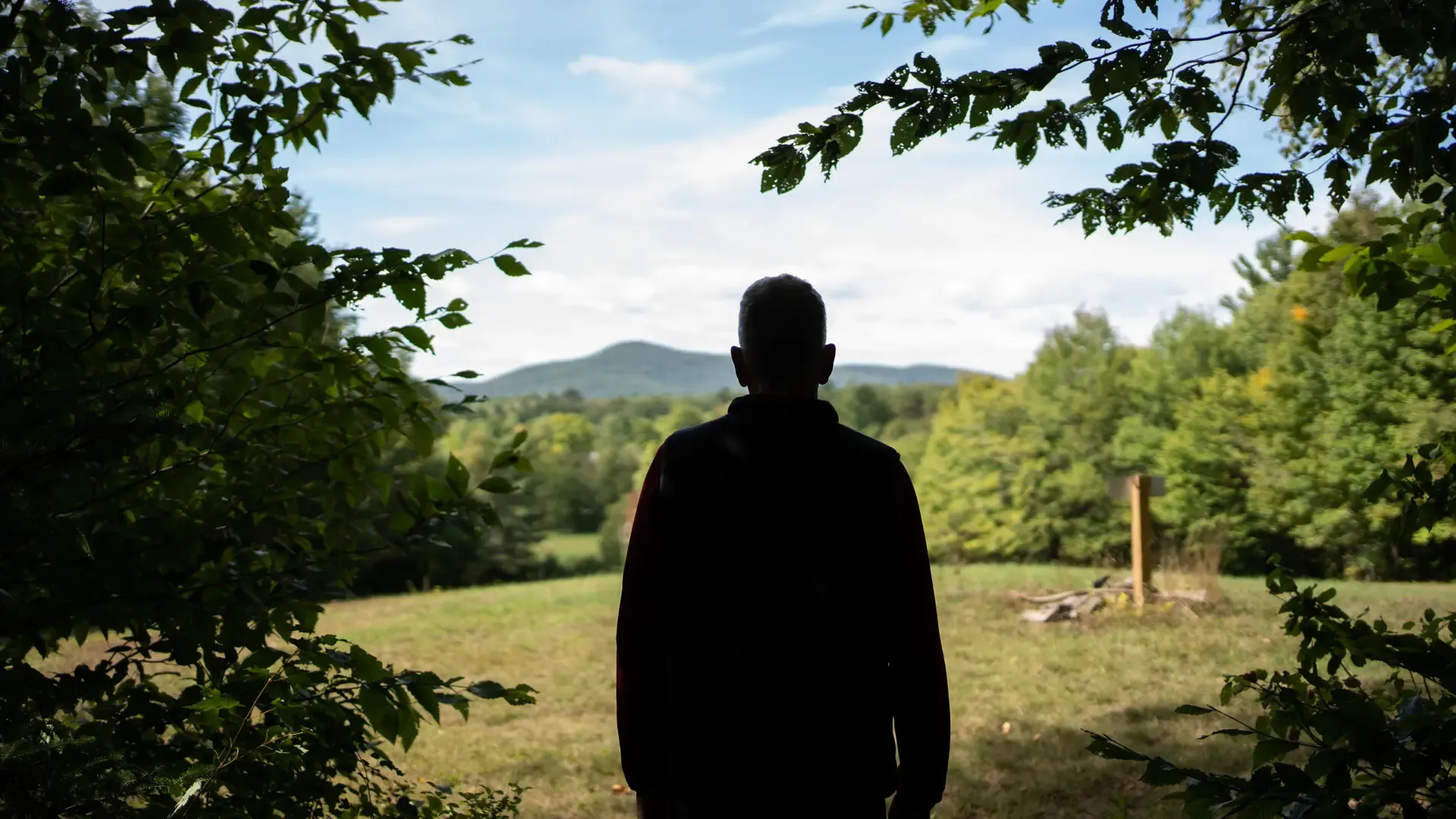Family Forest Owners Are in the Climate Fight. Now We Need You to Join Us.

Being part of the Family Forest Carbon Program has reshaped how I think about my forest. Passed down from my great-grandmother, Jockey Hill Farm has long been an important and beloved part of my family and our legacy. Now, as an enrolled landowner in the Family Forest Carbon Program (FFCP), my forest is also a tool to help mitigate climate change. I steward a flourishing carbon sink that, with careful support and management, I can maintain and improve over time. As I see it, from my forest at Jockey Hill Farm, I am a crucial partner in the global fight to protect nature and the planet.
When I became a grandfather to Abe and Faye, I began looking into what we could do with this land to better protect it for future generations and adapt to the effects of climate change we were seeing all around us. Recurring droughts, heavy rainfalls and erosion had all damaged my woodlands. And changing weather patterns brought in new species, causing diseases and infestations that drove native species out.
My journey led me to the American Forest Foundation’s Family Forest Carbon Program (FFCP). By enrolling in FFCP, I gained access to the technical and financial resources I needed. The American Forest Foundation’s foresters advise me on improved forest management practices that help my forest thrive and annual payments help me cover the ongoing costs of ownership. Today, tree planting, regeneration, and the removal of invasive plants all play an integral role in protecting my forest, which enhances my forest’s ability to sequester and store carbon.

There are many other landowners like me. I can tell people with pride that I participate in FFCP along with 700 other family forest owners from across the country. With our combined 92,000 acres, we are expected to sequester almost 2 million tonnes of carbon over the next 20 years. Yes, my carbon sink is a small one but even my small forest in Burlington, Vermont is an important piece of a larger puzzle. Together, all of us FFCP landowners from the woodlands of the Northeast to the pasturelands of Georgia are making an impact. Together, every tree we nurture is making a difference for climate change.
As forest owners, our hope is for our forests to stay forests and benefit the larger ecosystem. I’m proud of the work we are collectively doing for the planet, and I hope more forest owners have the opportunity to do the same.
That’s where we need help.
While I am proud to be among 700 landowners enrolled in FFCP, that is only the first step. There are 21 million acres of family and individually owned forests across the U.S. that could be activated in this fight, just like mine – they just need avenues to do so.
The American Forest Foundation has already done work to bridge this gap. Historically, forest carbon programs were only tenable for the largest landowners with more than 5,000 acres or so. Now landowners with just 30 acres or more of forest or open land can enroll in the FFCP, and benefit from the same technical and financial resources I received.
We need even more opportunities like FFCP so that more landowners can protect their forests. This will require more government and private investment. This investment will help pay for more foresters like the ones that guided me, more annual payments to cover more active forest management, and more outreach and practice development so we can give landowners from all walks of life the resources they need.
Most landowners truly love their trees and are proud stewards of their land. Like me, they look at their forests and see the aesthetic benefits, wildlife habitat, clean air and water, wood products and other attributes. Now, through programs like FFCP, they can look at their forests and recognize they are pioneers in generating another value: sequestering carbon from the atmosphere.
Decades from now, I hope Jockey Hill Farm is a resilient forest that my family continues to enjoy. And I hope it is one of millions of thriving forests across the country. Landowners like me are ready to do our part. Now we need policymakers and companies to join us in this fight, and the American Forest Foundation Carbon Auction is how they can do it.
There is a current $200 billion financing gap due to a limited supply of high quality carbon credits, low price visibility, drawn out due diligence, and a lack of market accessibility. The AFF Carbon Auction streamlines the buying process and gives carbon projects the upfront funding they need.
Learn more about the AFF Carbon Auction and how it is helping landowners like Tim here.